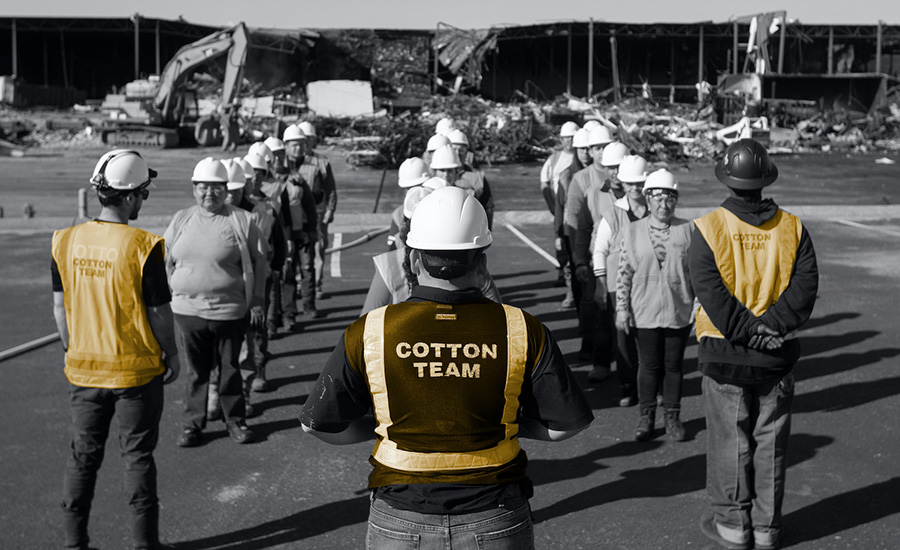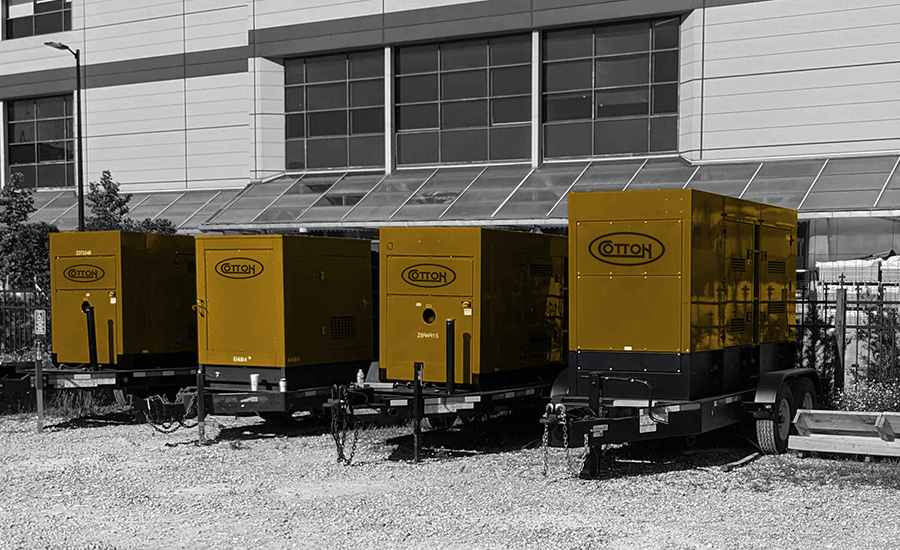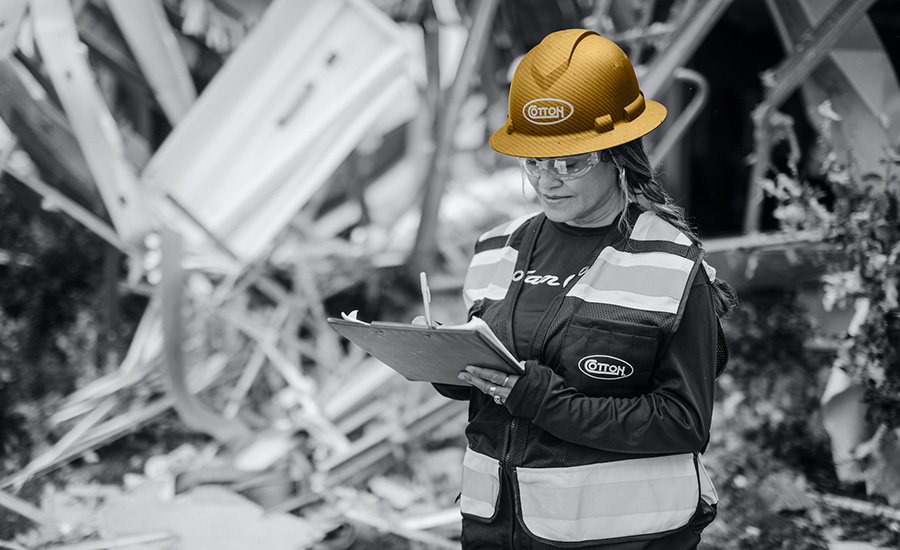Editor’s Note:
As spring storms and hurricane season creep into the continent, Cotton Global Disaster Solutions begins preparations for its 25th Atlantic Hurricane Season, also referred to as CAT season along the Gulf Coast. To celebrate its silver anniversary, Founder and CEO, Pete Bell, reflects on lessons learned and shares a bit of his knowledge with us today.

The Cotton Team huddled up and in communication during hurricane season....
In 1996, my colleague and I had the vision of revolutionizing the restoration industry by providing innovative solutions and giving our clients more than they expected. At that time, we weren’t one hundred percent sure what “more” meant, but, as the years progressed, we realized it meant going above and beyond to ensure business owners had everything they needed to reopen as soon as possible following a disaster. Due to that “more” mentality, we couldn’t standby and accept that we didn’t have all of the solutions, so we created them. Our passion for disaster recovery sprouted the growth of Cotton’s turnkey portfolio, which now includes restoration, construction, roofing, logistical support, environmental response, and catering.
Twenty-five years later, Cotton Global Disaster Solutions (Cotton GDS) has become one of the largest service providers in the commercial restoration landscape and has helped thousands of businesses recover from day-to-day damages and catastrophic events. Within those two-and-a-half decades, we’ve learned many things about being a reliable partner. Most importantly, we learned disaster planning starts long before a severe storm or catastrophe is forecasted, and it involves investing time and money. Below, I’ve outlined five things every restoration company should do to prepare themselves and their clients for the unexpected.

The Cotton team assembled in Nashville after a tornado devastated several businesses.
1. As your client’s trusted partner, always think 10 steps ahead.
You should constantly be thinking about how you can help clients both prepare for and recover from a catastrophe. For example, year-round communication and quarterly check-ins could uncover the need for roofing and structural repairs that make your client’s property resilient against wind and water threats. During these check-ins, you should also offer reassurance and peace-of-mind with helpful tips that guide clients and their teams through an emergency. And when you know a disaster is imminent, such as a hurricane, show up for them as soon as the hurricane’s path indicates landfall in your service area. During hurricane season, Cotton GDS begins communicating with clients in the storm’s path several days before landfall and ensures there are teams and assets nearby, so we can quickly provide relief for business owners and the community.

Cotton equipment ready to provide solutions for businesses in need.
2. Invest in your people.
To successfully achieve #1, you need to invest in two things: your people and your equipment. First, your people. Hire the best talent and treat them well because when your team feels supported and valued, they’ll feel motivated to do amazing work. Always encourage personal development and don’t be hesitant to fund crucial training sessions and certification courses. Don’t forget, your employees are the ones directly guiding your clients through a difficult moment, so you want them well-equipped to face any scenario professionally.
3. Invest in your equipment.
If you want to provide the most effective solutions, keep up with the latest trends in restoration technology and equipment. True, you don’t need to upgrade your equipment every time a new version comes out, but if it’s going to significantly improve efficiency and effectiveness, then investing in the latest advancements could benefit your revenue in the long run.

A Cotton Team Leader assessing damages after Hurricane Laura in Louisiana.
4. Know what to do in every disaster scenario.
Just because it hasn’t happened in your region before, doesn’t mean it never will. Having team members that have experienced different disasters in their personal life or professional careers could differentiate you from the competition. During Winter Storm Uri, it helped that we had several team members that knew how to respond to a hard freeze. From safely navigating the icy roads to anticipating the damages our clients would face, Cotton GDS was ready to jump into action thanks to our Subject Matter Experts.

A Cotton truck traveling through Austin.
5. Develop and nurture partnerships across the country.
Do not ignore the importance of networking in our industry. If there is ever an instance in which your team cannot respond to a client in a timely manner or if you do not offer the service a client is requesting, do not hesitate to call upon a partner in the industry to back you up. Just because it isn’t your team directly responding to the call, doesn’t mean you can’t continue being your client’s trusted partner. They are looking to you for support, so have a few contractors you trust to take on jobs you can’t get to yourself. Also, if you have clients that have properties in other states, having a network in that state allows you to continue your partnership without sacrificing quality and response times.
With hurricane season around the corner, how are you proactively helping your clients prepare for severe weather?

